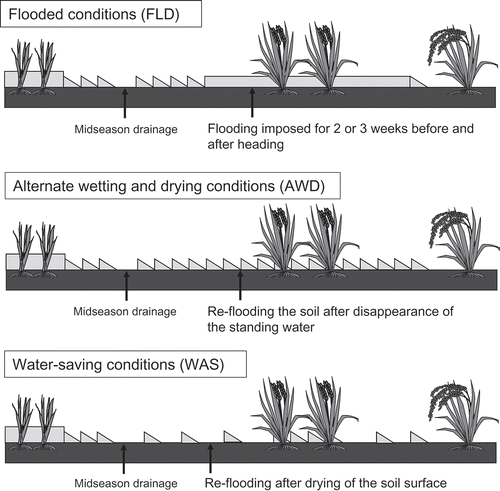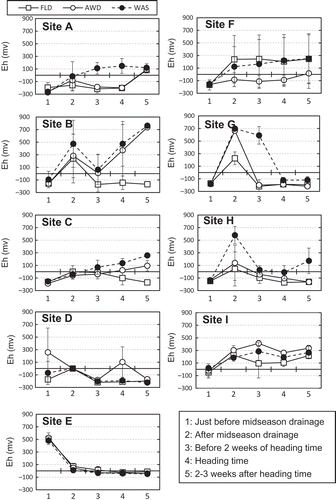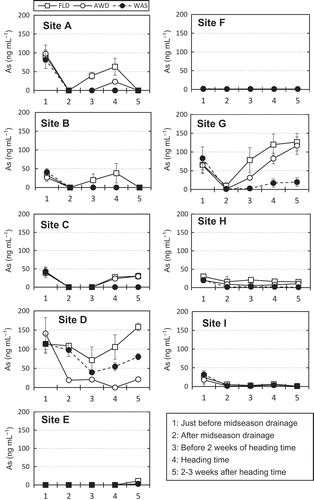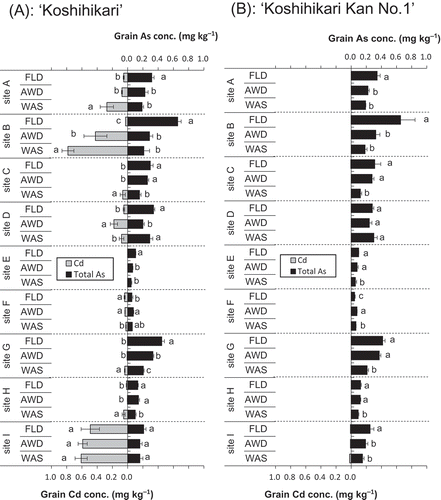Figures & data
Figure 1. Illustration of the three irrigation regimes that were applied to paddy fields at the nine sites after the mid-season drainage.

Table 1. Soil properties in the nine experimental fields.
Figure 2. Effects of the three water regimes (FLD, flooding; AWD, alternate wetting and drying; WAS, water-saving) on soil redox potential (Eh) at the nine experimental sites. Soil Eh was recorded five times. Values are means ± standard deviation (SD; n = 3 to 5).

Figure 3. Effects of the three water regimes (FLD, flooding; AWD, alternate wetting and drying; WAS, water-saving) on arsenic (As) concentrations in the soil solution at the nine experimental sites. The soil solution was collected at the same time as the soil redox potential (Eh; ) was determined. Values are means ± standard deviation (SD; n = 3).

Figure 4. Effects of the three water regimes (FLD, flooding; AWD, alternate wetting and drying; WAS, water-saving) on the concentrations of arsenic (As) and cadmium (Cd) in grains (brown rice) of (A) ‘Koshihikari’ and (B) ‘Koshihikari Kan No. 1’ grown at the nine experimental sites. Values are means ± standard deviation (SD; n = 3 to 4). Bars at a site labeled with different letters differ significantly (Tukey’s honestly significant difference test, p < 0.05).

Table 2. Two-way analysis of variance (ANOVA) for the effects of water regime, genotype and their interaction on grain arsenic (As) concentrations in rice (Oryza sativa L.) grown at each of the nine sites.
Figure 5. Effects of the three water regimes (FLD, flooding; AWD, alternate wetting and drying; WAS, water-saving) on the concentrations of manganese (Mn) in (A) grains and (B) straw. Values are means ± standard deviation (SD; n = 3 to 4).

Table 3. Grain yields (t ha−1) of the two rice (Oryza sativa L.) cultivars grown under different water regimes (FLD, flooding; AWD, alternate wetting and drying; WAS, water-saving) at each of the nine sites.
Table 4. Whole-grain ratio of rice (Oryza sativa L.) cultivars grown under different water conditions (FLD, flooding; AWD, alternate wetting and drying; WAS, water-saving conditions) at each of the nine sites.
